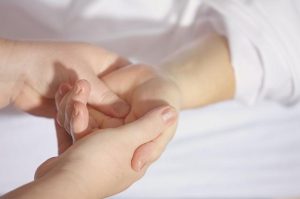Effleurage involves rhythmic hand movements across the skin. This technique helps to increase blood flow in one direction, stretches the tissues, and relaxes the client. Effleurage can also be used to help disperse body waste products. Effleurage can be used as the first technique in a massage session. Therapists can vary the tempo and pressure used during the effleurage.
Techniques
Massage therapists may use a variety techniques to ease muscle Massage Jeddah and pain. Rhythmic compression, for example, creates a deep hyperemic effect in tissues. Cross-fibre friction causes a widening and stretching effect in large muscles groups. The technique reduces adhesions and helps build strong, flexible tissue during the healing process. Massage techniques include tapping, vibration, long strokes, tapping, and effleurage.
There are many basic massage techniques used by certified massage therapists, such as Swedish and deep tissue. Among these basic techniques are effleurage, petrissage, frictions, tapotement, and kneading. Each movement has its therapeutic value. Licensed massage therapists know how to safely use each technique and are familiar with the therapeutic value of each movement. This book will help you to understand the basics of massage techniques.
Benefits
Massage can be a relaxing way to reduce stress, improve your mental health, and enhance your immune system. Massages can help relieve pain, increase circulation and oxygenation, improve the body’s ability to heal itself, and decrease cortisol (a stress hormone). This helps to fight off viruses, colds and other diseases. It is also beneficial for those with autoimmune diseases. It is well-known to improve the patient’s concentration and attention.
A 45-minute massage can boost the immune system. Regular massage sessions can increase the number of white blood cells which protect against disease. Massage can also reduce cortisol which is a stress hormone that can lead towards infection. Because massage increases flexibility, it can help people with low immunity. It can help people with chronic pain or trauma recover from trauma. It is a highly beneficial therapy. Therefore, it is vital to seek massage therapy regularly to benefit from all the benefits it offers.
Suggested length
The length of your massage will depend on your goals and current physical condition. A 50-minute massage can be enough for a full body relaxation massage with targeted neckwork. You can also opt for a full-body massage, with targeted work on specific areas. This takes at least an hour. If the main purpose is to work on a particular area, a 60 minute session is sufficient.
A massage can be relaxing. It is best to get it once a month. If you are looking for specific pain relief, an 80-minute massage will work well. A shorter session might be sufficient. You can always opt to have a shorter session, but it may feel repetitive.
Side effects
You are familiar with the benefits and side effects associated with massages. You might even find the massage relaxing and beneficial. To avoid negative side effects, you need to be aware of the positives. Remember, you’re getting a massage for stress relief and relaxation. Here are some common side effects to massage. Continue reading to learn about the side effects and benefits of each type.
Redness may occur after a painful massaging. This is caused by your skin reacting to heat and causing a burning sensation. Although this is a common side effect to powerful massages, it could indicate a more serious health problem. Make sure your masseuse knows if you have any underlying conditions. Itching is usually not serious and disappears within a few days. However, you should notify your doctor if you have any symptoms.
Contraindications
Some conditions are absolutely contraindications to massage. These conditions may be localized or systemic, and no treatment modification can make it safer. Sometimes, a contraindication may be relative. In these cases, massage may be safe if certain modifications were made. This is an important distinction to make, as massage is not recommended for people with certain health conditions. Here are some common contraindications for massage.
Expert opinion is used to determine whether there are contraindications for massage. Massage may not be safe for some people. Therapists may differ on whether a client is able to receive a massage. For example, deep vein thrombosis is where a client should not have massage near the area of the clot. Massage may cause the clot to dislodge or form an embolism by its mechanical effect.